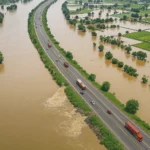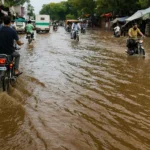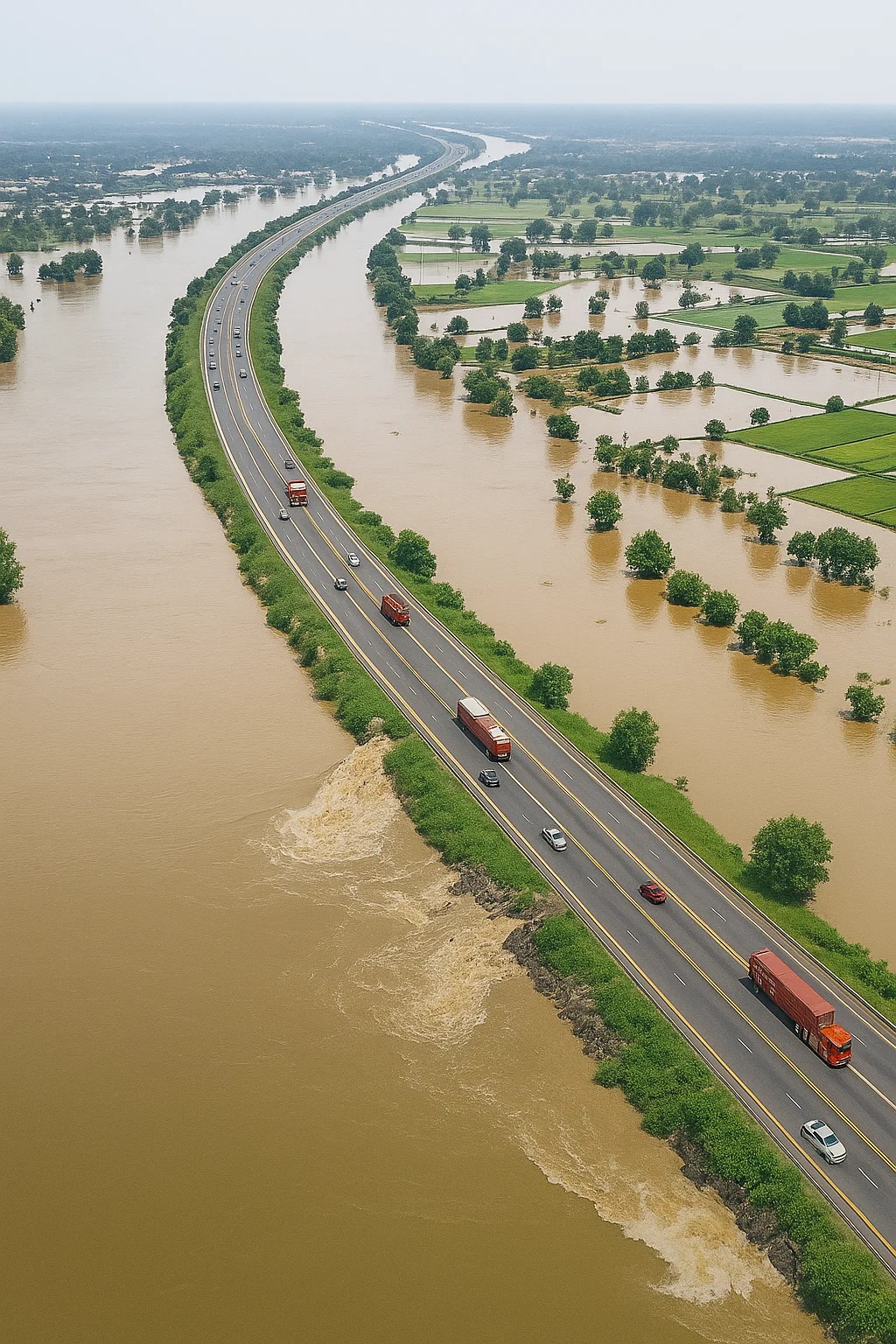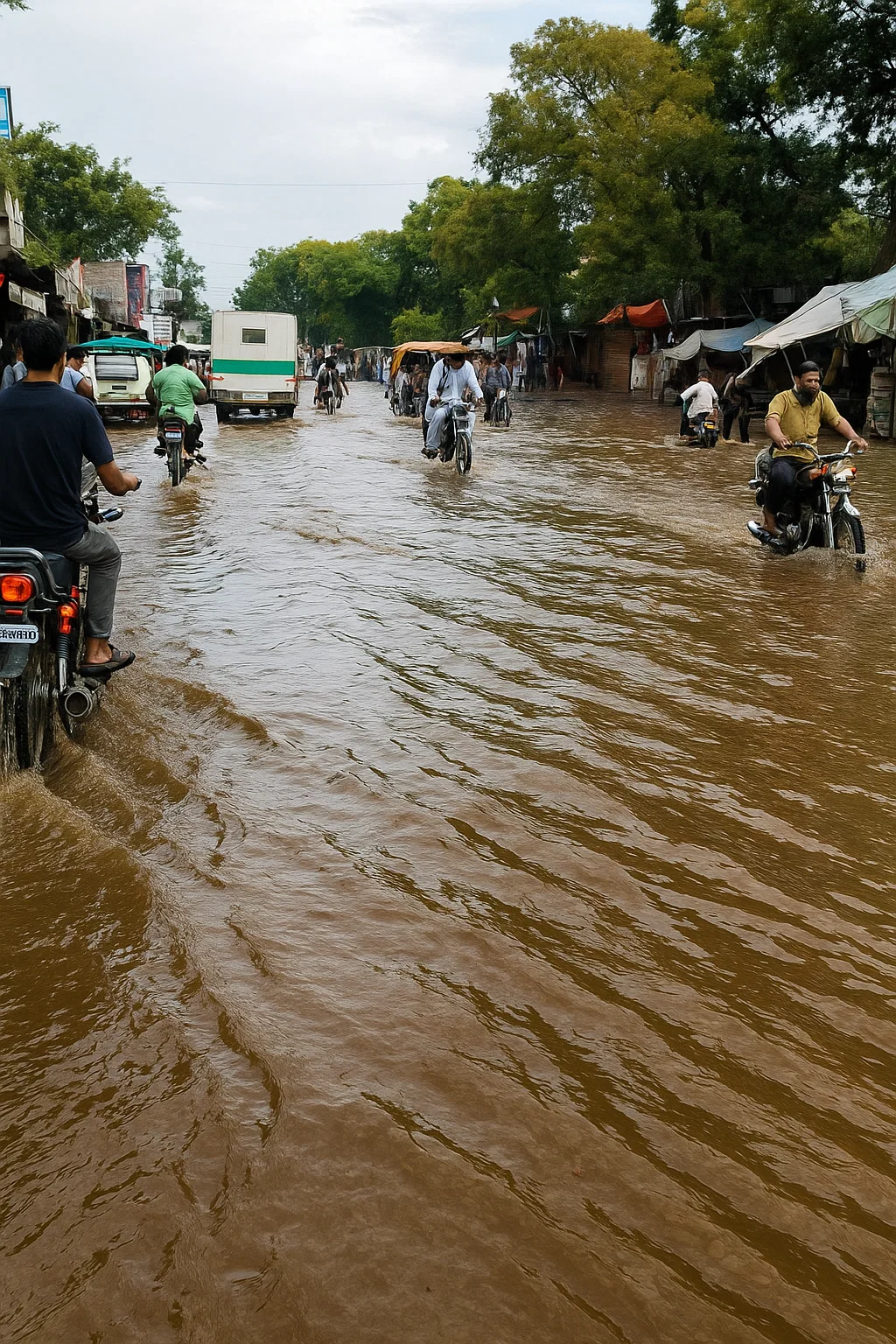The recent spell of Karachi Rains has once again exposed the vulnerability of Pakistan’s largest metropolitan city. Over just two days, the downpour has resulted in widespread damage, with traders reporting losses amounting to nearly Rs. 15 billion. Beyond the monetary loss, the rains have disrupted daily life, halted businesses, and highlighted the weaknesses in the city’s infrastructure.
Impact on Businesses
The most immediate and severe impact of the Karachi Rains has been on businesses across the city. Major markets such as Saddar, Tariq Road, and Gul Plaza were forced to remain closed due to waterlogging. Traders reported that goods worth millions were damaged by floodwaters entering their shops. Many businesses also lost customers, as people were unable to step out due to flooded streets and transportation problems.
The Karachi Rains created a ripple effect across supply chains, with workers unable to reach markets and logistics being disrupted. The Karachi Chamber of Commerce and Industry (KCCI) confirmed that the rain has directly affected thousands of small traders who were already struggling due to inflation and slow economic activity.
Flooded Streets and Broken Infrastructure
One of the most visible consequences of the Karachi Rains was the state of the city’s roads. Streets in Gulistan-e-Jauhar, Gulshan-e-Iqbal, Saddar, and North Karachi were submerged under several feet of water. Sewage drains overflowed, mixing with rainwater and creating unhygienic conditions. Vehicles broke down in standing water, and residents were left stranded for hours.
The fragile infrastructure of the city was once again laid bare by the Karachi Rains. Poor drainage systems, lack of proper planning, and delayed municipal responses made the situation worse. Citizens expressed frustration on social media, demanding urgent reforms to prevent such urban flooding in the future.
Power Outages Add to Misery
Adding to the chaos, the Karachi Rains triggered massive power breakdowns across the city. Several areas, including Gulshan, Surjani Town, and parts of DHA, remained without electricity for more than 24 hours. In some neighborhoods, power outages stretched beyond 26 hours, leaving residents in extreme difficulty.
The Karachi Electric supply company struggled to restore electricity, citing safety concerns due to waterlogging. But for residents and traders, the outages meant spoiled goods, halted business operations, and sleepless nights without fans or cooling during the humid monsoon.
Traders Bear the Brunt
The trading community estimates that losses from the Karachi Rains in just two days touched nearly Rs. 15 billion. This figure includes spoiled goods, reduced business hours, property damage, and worker absenteeism. Many shopkeepers had to invest in repairing their stores after floodwater entered, while others had to replace entire inventories of damaged goods.
For small traders, these losses were devastating. Many of them live on day-to-day earnings and cannot afford prolonged business disruptions. The Karachi Rains not only caused immediate financial setbacks but also deepened long-term uncertainty for small business owners.
READ MORE:
https://freedompakistan.com.pk/ifj-urges-sc-to-review-peca/
Citizens’ Daily Struggles
Beyond the commercial impact, the Karachi Rains also made everyday life extremely difficult for ordinary residents. Commuters were stranded for hours, public transport services broke down, and emergency vehicles struggled to reach affected areas.
Families living in low-lying neighborhoods faced the brunt of flooding, with many forced to evacuate their homes temporarily. Children missed school, and daily wage laborers were unable to find work. For many households, the Karachi Rains translated into both physical hardship and financial strain.
Government Response
Following the devastation, the Sindh government acknowledged the severity of the crisis caused by the Karachi Rains. Officials visited affected areas, promising relief measures and drainage improvements. The Karachi Municipal Corporation announced emergency clean-up drives and temporary pumping stations to clear waterlogged roads.
However, critics argue that these steps are too little, too late. The Karachi Rains occur almost every year, yet the city’s drainage system remains outdated and insufficient. Many citizens believe that without long-term planning, Karachi will continue to suffer from the same issues during every monsoon.
Calls for Accountability
Civil society groups, traders, and residents have raised strong demands for accountability. They argue that billions of rupees have been allocated over the years to improve Karachi’s drainage and infrastructure, yet very little progress is visible. The devastation caused by the Karachi Rains has reignited debates about corruption, inefficiency, and poor governance in the city’s administration.
The Bigger Picture
The impact of the Karachi Rains goes beyond temporary losses. For a city that contributes the largest share to Pakistan’s economy, disruptions in trade and transport have nationwide consequences. Economic experts warn that repeated damages caused by poor urban planning could discourage investment and slow down growth.
Moreover, climate change is making monsoon rains more intense and unpredictable. Without proper adaptation measures, the Karachi Rains will continue to grow more destructive year after year, further endangering both lives and livelihoods.
The Way Forward
Experts suggest several solutions to reduce the future impact of Karachi Rains. These include:
-
Modernizing the city’s drainage and sewage systems.
-
Building rainwater harvesting infrastructure to reduce flooding.
-
Implementing stricter urban planning and zoning laws.
-
Improving disaster preparedness and early warning systems.
-
Engaging private sector and community organizations in urban resilience projects.
If these measures are taken seriously, Karachi can transform from a flood-prone megacity into a more resilient urban hub. But without decisive reforms, the next spell of Karachi Rains will bring the same chaos once again.
Conclusion
The devastation caused by the Karachi Rains is not just about two days of heavy downpour — it is a reminder of the urgent need for structural reforms in Pakistan’s largest city. Traders lost Rs. 15 billion, citizens suffered immensely, and the city’s infrastructure once again collapsed under pressure.
Unless authorities take long-term measures to address drainage, power infrastructure, and urban planning, Karachi will remain vulnerable. The Karachi Rains should not be an annual disaster; with proper governance and investment, they can be managed to protect both lives and livelihoods.












